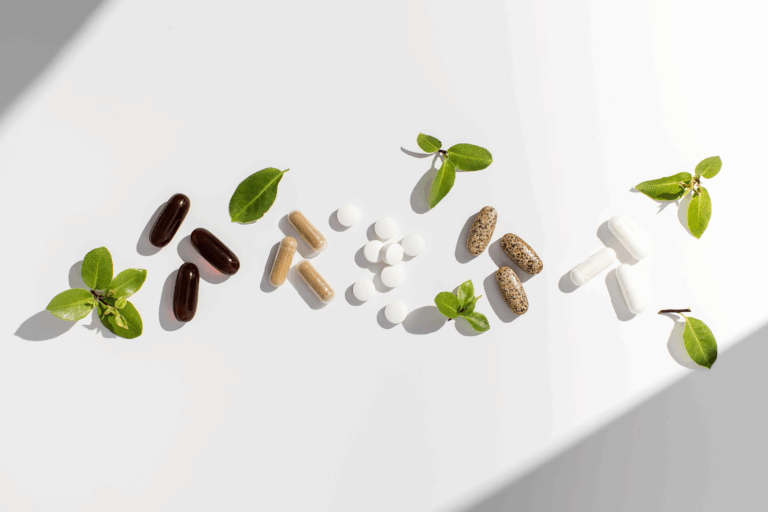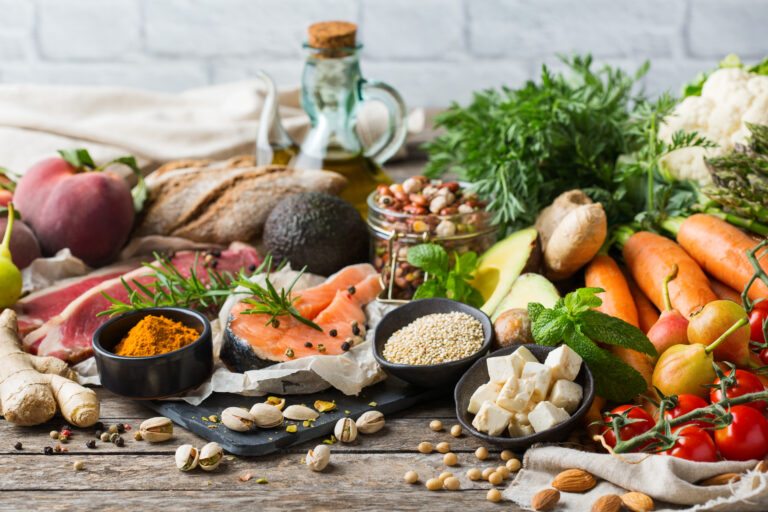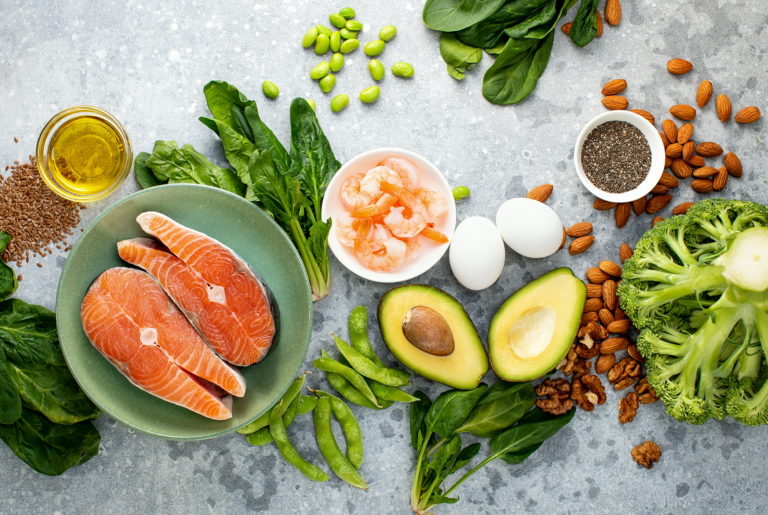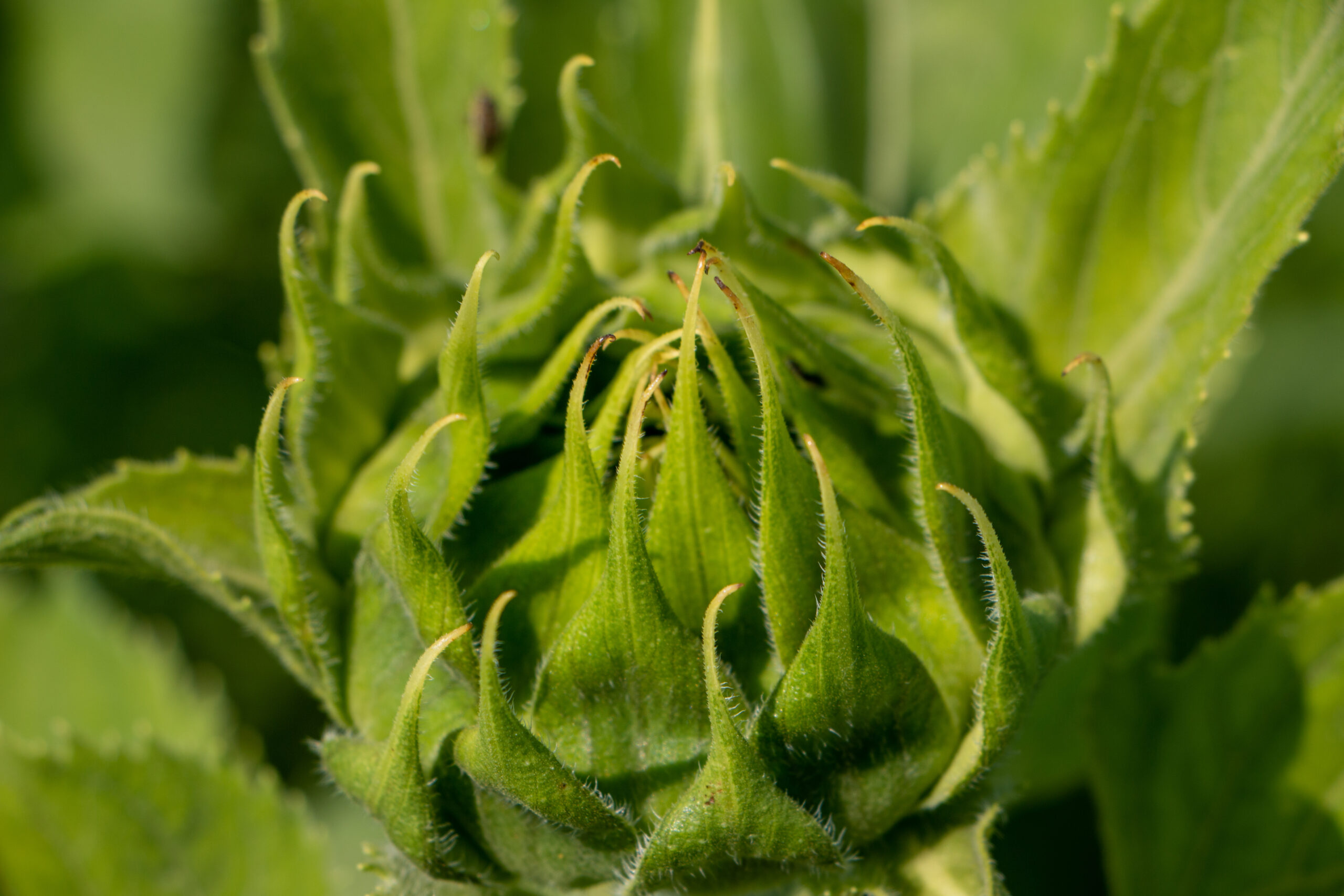Nutrition and Functional Neurology: Partners in Holistic Patient Care
Functional neurology is a rapidly growing concept envisioning the nervous system as an integrated network that controls the homeostasis of the body through balanced signaling. This network is free from distortions potentially leading to disorders such as neurological or demyelinating diseases, movement or seizure disorders, headaches and pain syndrome, and cerebrovascular conditions. Functional neurology seeks to address irregularities that exist in the functioning of the autonomic nervous system.
A New Paradigm
Sweeping through models of chiropractic care, functional neurology is transitioning away from the limited concept of vertebral fixations to embracing the concept of neural tone, championed by the very originator of chiropractic – D.D. Palmer.1 Indeed, the updated definition of subluxation put forth by the Council for Chiropractic Practice in 2013 plainly states that subluxation is “a neurological imbalance or distortion in the body associated with adverse physiological responses and/or structural changes which may become persistent or progressive.”2 Following this line of reasoning, functional neurology opens the discussion to a range of causes of these neurological imbalances:
- inflammation,
- nutritional problems,
- hormonal imbalances,
- emotional stress,
- structural derangements that dominated earlier models of chiropractic interventions.
The positive aspect of functional neurology is its reorganization of nerve cells, making possible the restoration or bypass of connections that have become disrupted or damaged. A perfect example would be performing exercises to recover from stroke.3
The negative aspect of functional neurology, however, is that if a neuronal pathway is not fired, synaptic connections may become inactive with the loss or inactivation of neurotransmitters and receptors, as exemplified by the risk of cognitive decline in the elderly and the undertaking of exercises to counteract that effect. Both of these transformations of nervous system activity have become known as neuroplasticity, not limited to neural injury or recovery, but also including the remodeling of dendrites, synapse turnover, long-term potentiation, and neurogenesis. One striking example, out of many demonstrating the phenomenon of neuroplasticity, was offered by an observational study of London cab drivers, in which there was a redistribution of gray matter in their brains as they became familiar with the city’s layout.4-5
Support by Experimental Evidence
What makes neuroplasticity so noteworthy? The gateway through which external interventions may be applied to correct dysfunctions of the nervous system. There are two such approaches supported by experimental evidence.
Chiropractic
- Site-specific instrumental vertebral adjustments at the L5 or L6 joints in experimental rats reversed an extensive variety of indicators of inflammation (neuroexcitation, behavioral responses to heat and touch, cellular necrosis, and glial cell formation), that had been created by the injection of an inflammatory cocktail into the same joints. Adjustments to the L4 joint showed no such responses.6
- Experimental rats that had undergone chronic compression of the dorsal root ganglion to mimic neuropathic pain showed that repetitive instrumental spinal manipulative adjustments significantly reduced the simulated pain and inhibited or reversed numerous neurochemical alterations (dorsal root ganglion inflammation and increased neuron hyperexcitability), that had been created by the compression procedure. Levels of the anti-inflammatory interleukin-10 (IL-10) increased following the spinal manipulations with this cytokine suspected to have triggered these healing responses.7
- A single chiropractic upper-thoracic thrust reduced the levels of the inflammatory cytokines tumor necrosis factor α (TNF-α) and interleukin-1 beta (IL-1β), leading the authors to describe the interplay between the nervous and immune systems as neural immunoregulation.8
- Simultaneous reductions of neck pain and TNF-α occurred in two patients after 4 weeks of manipulative therapy.9
- A trial of 9 thoracic manipulations to 10 chronic back pain patients led to the reductions of the pro-inflammatory interleukin-6 (IL-6) cytokine and C-reactive protein to levels seen in normal subjects.10
Nutrition
- Omega-3 fatty acids (3-PUFAs) contain both eicosapentaenoic acid (EPA) and docosahexaenonic acid (DHA), which have anti-inflammatory capabilities. EPA in particular blocks the formation of arachidonic acid, which otherwise would be converted to the inflammatory prostaglandin E2. In exercise-trained men, daily consumption of both EPA and DHA produced reductions of the levels of the inflammatory markers C-reactive protein and tumor necrosis factor α. For DHA, a randomized, double-blind, placebo-controlled, parallel study of men with elevated triglyceride levels showed that DHA taken daily for 3 months produced reductions of the inflammatory markers C-reactive protein and interleukin-6.11-13
- Curcumin, a member of the ginger family, inhibits an extensive array of inflammatory response mediators, including the nuclear factor kappa B (NF-κB) mitogen-activated protein kinase (MAPK), 5- AMP activated protein kinase (AMPK), and Janus kinase (JAK) pathways, cytokines, chemokines, adhesion molecules, growth factors, and the enzymes cyclooxygenase, lipoxygenase, and inducible nitric oxide synthase.14-16
- Resveratrol, a fat-soluble molecule first reported as a component of red wine in the early 1990s, was shown to inhibit the inflammatory production of nitric oxide following a challenge with lipopolysaccharide. With resveratrol having been shown to stimulate a protein deacylase which regulates metabolism (sirtulin), additions of the latter compound plus resveratrol were shown to sharply reduce the signaling of inflammatory intermediates by NF-κB. A particular effect was to reduce the signaling of β-amyloid protein (the principal component of plaques found in the brains of Alzheimer patients), displaying a strong neuroprotective effect.17-20
- Alpha lipoic acid (ALA) displayed anti-inflammatory activity in two trials involving experimental mice. In one investigation, ALA significantly attenuated the lipopolysaccharide-induced expression of NF-κB and inflammation-related genes related to lipid metabolism in white adipose tissue. The second trial demonstrated that ALA added to rat mesangial cells reversed the lipopolysaccharide-induced release of the inflammatory intermediates cyclooxygenase-2, prostaglandin E2, the inducible nitric oxide synthase, and the cytokines TNF-α and IL-1β. These effects were accomplished by the ability of ALA to inhibit the NF-κB signaling pathway.21-22
- Vitamins B1, B6 and B12: Administration of these vitamins, singly or in combination, displayed the ability to inhibit thermal hyperalgesia in experimental rats with primary sensory neural injuries.23
Why Chiropractors Pay Attention to Nutrition
Despite the aforementioned findings that chiropractic can address biochemical as well as biomechanical issues in the body, the biochemical components are best fulfilled by nutrition, including food, water, and supplements. The most recent 2015 Practice Analysis from the National Board of Chiropractic Examiners (NBCE) provides both a logical and concrete basis for the relationship of chiropractic to nutrition.
The NBCE concluded that “chiropractic is based on the premise that the body is able to achieve and maintain health through its own natural recuperative powers, provided it has a properly functioning nervous system and receives the necessary health maintenance components. These components include adequate nutrition, water, rest, exercise, and clean air.”24 97 percent of chiropractors offer nutritional and dietary recommendations, establishing nutrition as an integral part of a treatment plan for chiropractic patients. Given chiropractic’s focus on the nervous system and the growing belief that the gastrointestinal system is our “second brain,” proper nutrition merits the serious attention of the practicing chiropractor.25
- Palmer, DD. (1910). The chiropractor’s adjuster [The Text-Book of the Science, Art, and Philosophy of Chiropractic]. Portland, OR, Portland Printing House.
- Council on Chiropractic Practice. (2013). Clinical practice guidelines, 4th Edition.
- Barnes, JN. (2015). Exercise, cognitive function, and aging. Advances in Physiology Education; 39: 55-62.
- Woolett, K., Maguire, EA. (2011). Acquiring “the Knowledge” of London’s layout drives structural brain changes. Current Biology; 21: 109-114.
- Maguire, EA., Gadian, DG., Johnsrude, IS., Good, CD., Ashburner, J., Frackowiak, RS., et al. (2000). Navigation-related structural change in the hippocampi of taxi drivers. Proceedings of the National Academy of Sciences USA; 97: 4398-4403.
- Song, XJ., Gan, Q., Cao, J-L., Wang, Z-B., Rupert, RL. (2006). Spinal manipulation reduces pain and hyperalgesia after lumber intervertebral foramen inflammation in the rat. Journal of Manipulative and Physiological Therapeutics; 29(1): 5-13.
- Song, X-J., Huang, Z-J., Song, WB., Song, S-S., Fuhr, AF., Rosner, AL., Ndtan, H., Rupert, RL. (2016). Attenuation effect of spinal manipulation on neuropathic and postoperative pain through activating endogenous anti-inflammatory cytokine interleukin 10 in rat spinal cord. Journal of Manipulative and Physiological Therapeutics; 39(1): 42-53.
- Teodorczyk-Injeyan, JA., Injeyan, HS., Ruegg, R. (2006). Spinal manipulative therapy reduces inflammatory cytokines but not substance P production in normal subjects. Journal of Manipulative and Physiological Therapeutics; 29(1): 14-21.
- Omos, G., Mehnishi, JN., Bakacs, T. (2009). Reduction in high blood tumor necrosis alpha levels after manipulative therapy in 2 cervicogenic headache patients. Journal of Manipulative and Physiological Therapeutics; 32(7): 586-591.
- Roy, RA., Boucher, JP., Contois, AS. (2010). Inflammatory response following a short-term course of chiropractic treatment in subjects with and without chronic low back pain. Journal of Chiropractic Medicine; 9: 107-104.
- Rees, D., Miles, EA., Bannerjee, T., Wells, SJ., Boynette, CE., Wahle, KWJ., Caldder, PC. (2006). Dose-related effects of eicosapentaenoic acid on innate immune function in healthy humans: a comparison of young and older men. American Journal of Clinical Nutrition; 83: 331-342.
- Bloomer, RJ., Larson, DE., Fisher-Wellman, KH., Galpin, AJ., Schilling, BK. (2009). Effect of eicosapentaenoic and docosahexaenoic acid on resting and exercise-induced inflammatory and oxidative stress biomarkers: a randomized, placebo-controlled, cross-over study. Lipids in Health and Disease; 8:36.
- Kelly, DS., Diegel, D., Fedor, DM., Adkins, Y., Mackey, BE. (2009). DHA supplementation decreases serum C-reactive protein and other markers of inflammation in hypertriglyceridemic men. Journal of Nutrition; 139: 495-501.
- Ghosh, S., Banerjee, S., Sil, PC. (2015). The beneficial role of curcumin on inflammation, diabetes, and neurodengerative disease. A recent update. Food and Chemiical Toxicology; 83: 111-124.
- Shehzad, A. (2013). Molecular mechanisms of curcumin action: signal transduction. Biofactors; 39(1): 27-36.
- Brennan, P., O’Neill, AJ. (1998). Inhibition of nuclear factor κB by direct modification in whole cells—mechanism of action of nordihydrogluaiaritic acid, curcumin and thiol modifiers. Biochemical Pharmacology; 55(7): 965-973.
- Siemann, EH., Creasy, LL. (1992). Concentration of the phytoalexin resveratrol in wine. American Journal of Enology and Viticulture; 43(1): 49-52.
- Cho, D-I., Koo, N-Y., Chung, J., Kim, S-S., Rye, SY., Im, SY., Kim, K-M. (2002). Effects of resveratrol-related hydroxystilbenes on the nitric oxide production in macrophage cells: structural requirements and mechanism of action. Life Sciences; 71(17): 2071-2082.
- Gertz, M., Nguyten, GT., Fischer, F., Suenkel, B., Schlicker, C., Franzel, B., Tomaschewski, J., Aladini, F., Becker, C., Wolters, D., Steegborn, C. (2012). A molecular mechanism for direct sirtulin activation by resveratrol. PLoS One; 7(11): e49761.
- Chen, J., Zhou, Y., Mueller-Steiner, S., Chen, LF., Kwon, H., Yi, S., Mucke, L., Gan, L. (2005). SIRT 1 protects against microglia-dependent amyloid-toxicity through inhibiting NF-kappa B signaling. Journal of Biological Chemistry; 280(48): 40364-40374.
- Guo, J., Gao, S., Liu, Z., Zhao, R., Yang, X. (2016). Alpha-lipoid acid alleviates acute inflammation and promotes lipid mobilization during the inflammatory response in white adipose tissue in mice. Lipids; 51(10): 1145-1152.
- Li, G., Fu, J., Zhao, Y., Ji, K., Luan, T., Zang, B. (2015). Alpha-lipoic acid exerts anti-inflammatory effects on lipopolysaccharide-stimulated mesangial cells via inhibition of nuclear factor B (NF-κB) signaling pathway. Inflammation; 38(2): 10-19.
- Wang, Z-B., Gan, Q., Rupert, RL., Zang, Y-M., Song, X-J. (2005). Thiamine, pyridoxine, cyanocoalbumin and their combination inhibits thermal, but not mechanical, hyperalgesia in rats with primary sensory neuron injury. Pain; 114: 266-277.
- National Board of Chiropractic Examiners.(2015). Practice analysis of chiropractic 2015. Greely, CO: National Board of Chiropractic Examiners.
- Sonnenberg, J., Sonnenberg, E.. Gut feelings—the “Second Brain” in our gastrointestinal systems. (2015). Scientific American.







